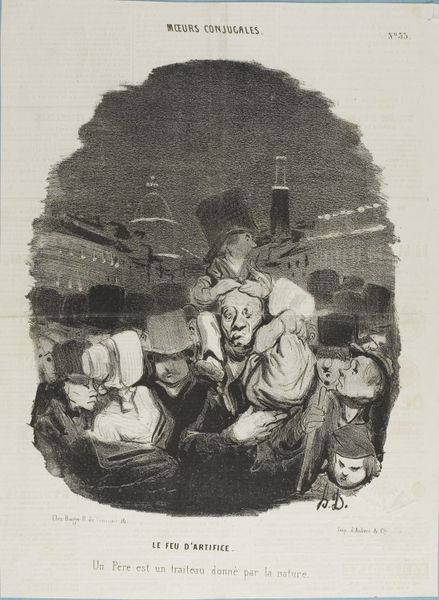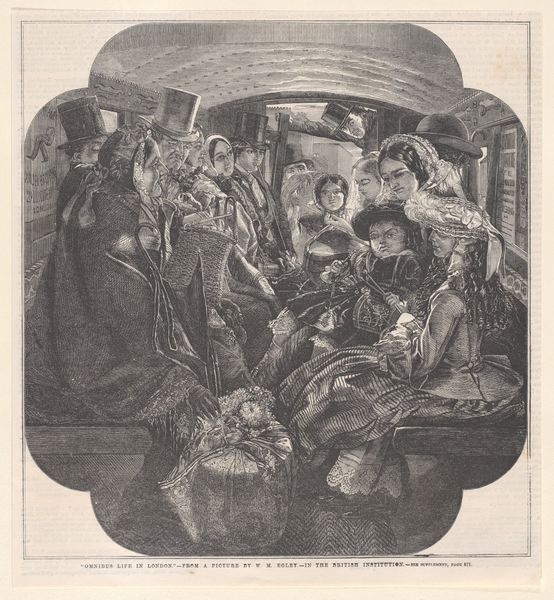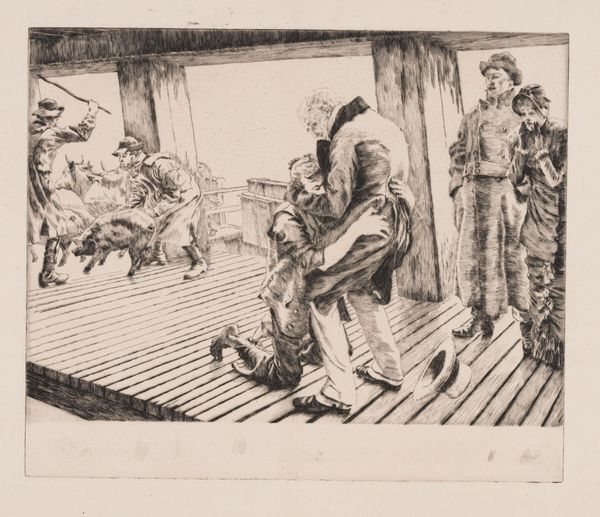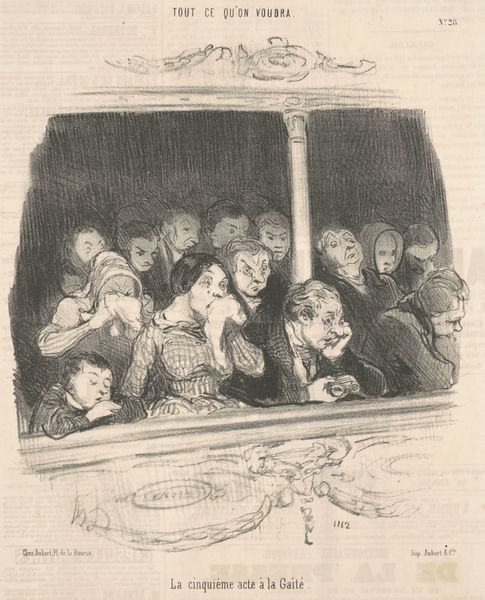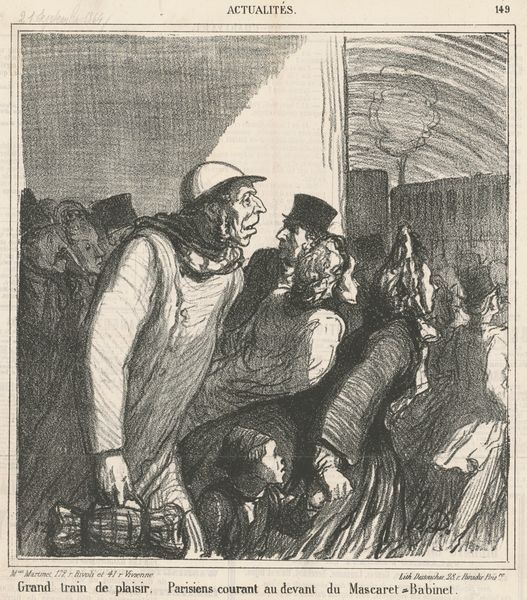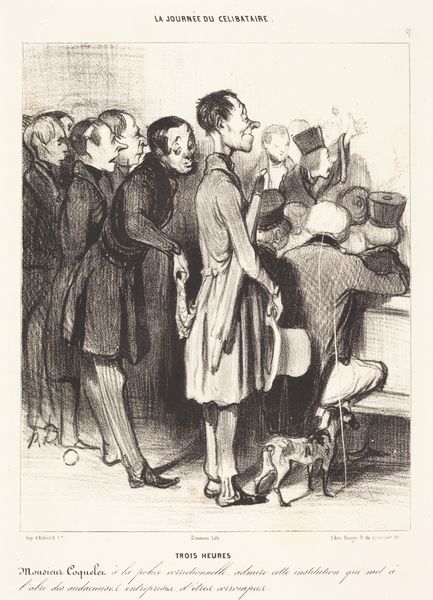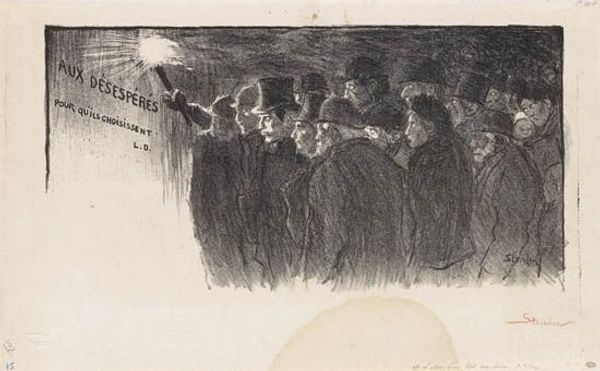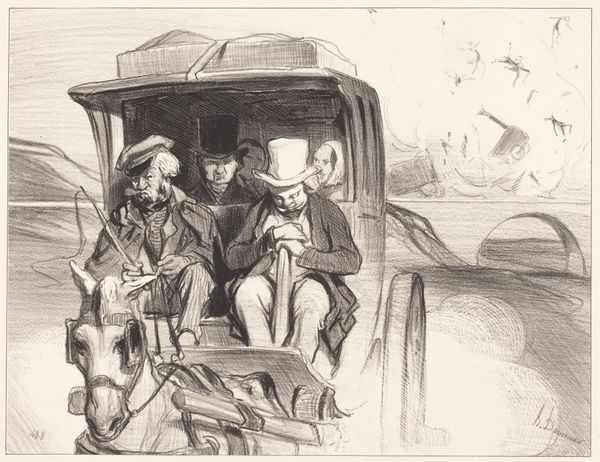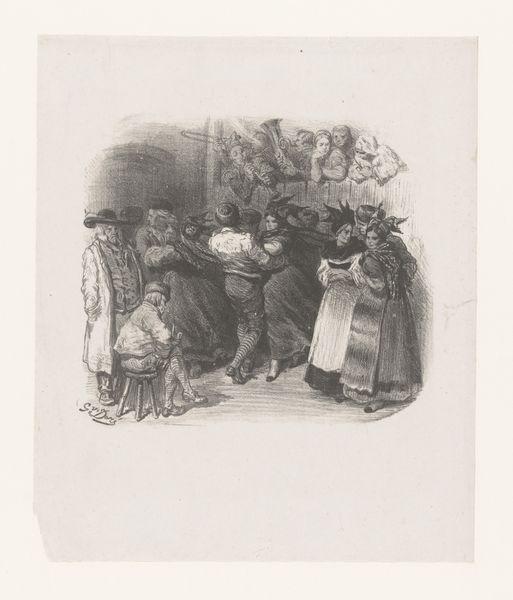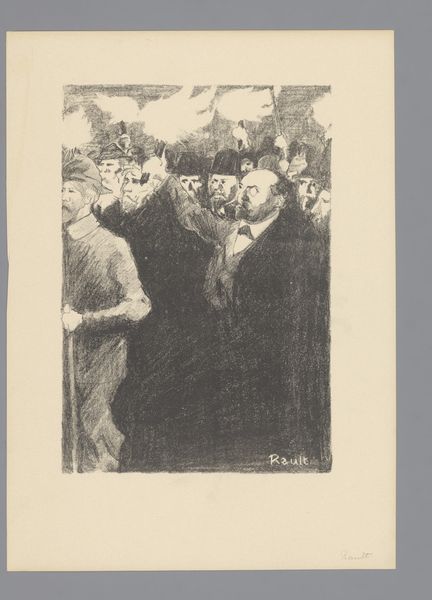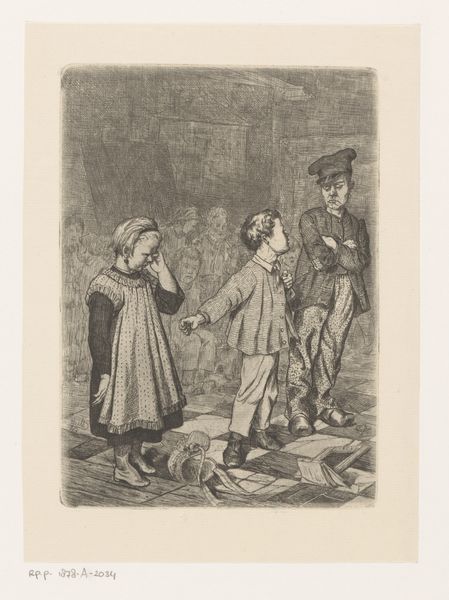
Le spectacle est une chose bonne pour le peuple de Paris ... c. 19th century
0:00
0:00
lithograph, print
#
narrative-art
#
lithograph
# print
#
caricature
#
figuration
#
romanticism
#
genre-painting
Copyright: National Gallery of Art: CC0 1.0
Curator: This is Honoré Daumier's lithograph, dating from the 19th century, entitled "Le spectacle est une chose bonne pour le peuple de Paris..." which translates to "The spectacle is a good thing for the people of Paris...". Editor: My immediate impression is of dense atmosphere—a crowd presses together, everyone craning their necks towards some unseen focal point of interest, implied to be "the spectacle". The starkness of the lithographic lines amplifies the feeling of being enclosed. I wonder about the quality of the paper? Curator: Lithography was revolutionary because of how reproducible images became and their effect on mass culture. The artist could make a work for the "people of Paris". Notice how the elevated child becomes almost a symbol of striving and yearning. Are we meant to see innocence or an acknowledgement of shared hope for something better through this "spectacle"? Editor: The materiality definitely speaks to Daumier’s project of accessibility and social critique. Lithography allowed for mass production, democratizing art, and spreading satirical commentary far and wide. The very grain of the stone from which this image was made gives it a weight that goes beyond its topical subject, almost making it feel gritty. I’m also struck by the body of the worker whose shoulder provides that elevation to the boy and a better view. His turned neck and concentration represent the everyday material struggle to reach that goal: entertainment for himself and the little one. Curator: Exactly. The choice of lithography itself amplifies Daumier's message. The symbolic significance, in its historical context, touches upon collective experiences during a rapidly industrializing era in France, the yearning of common people in urbanized environments looking for distraction and unity through the "spectacle." And he used these same qualities for political agitation. Editor: Yes, there's that dual edge – both celebrating the communal experience while subtly pointing out its constructed nature and the social realities underlying it. Even something so supposedly detached, like entertainment, reveals those tensions. I notice, also, the crowd includes different social layers as reflected by different styles of hat and dress. Curator: And perhaps it's also pointing to a hierarchy of viewing, quite literally, someone getting a boost. I agree—a reminder that shared experiences are inevitably filtered through individual circumstances. I am convinced that the lasting power comes from reflecting universal truths about hope, resilience, and the dynamics within society. Editor: For me, that lies in understanding Daumier's ingenious choice of lithography to reveal these dynamics, how a common material process helped define what it means for something to even *become* "spectacle."
Comments
No comments
Be the first to comment and join the conversation on the ultimate creative platform.
